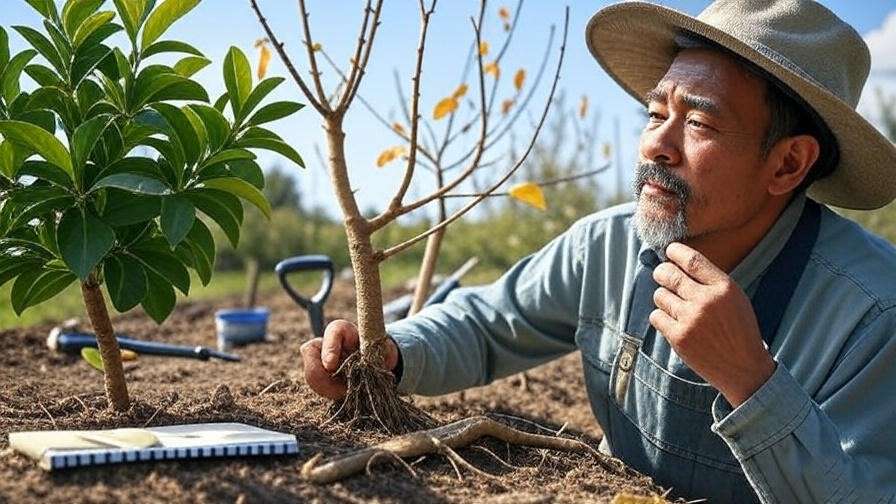Picture this: a sun-dappled backyard filled with the sweet aroma of ripe apples, pears, or cherries, all grown from your very own bare root fruit trees. Sounds like a dream, right? With the right knowledge, that dream can become your reality! Bare root fruit trees are an affordable, eco-friendly way to start your home orchard, offering the promise of delicious harvests for years to come. Whether you’re a novice gardener or a seasoned grower, this guide will walk you through seven expert-backed tips to ensure your trees thrive. From choosing the perfect variety to mastering planting techniques, we’ve got you covered with practical, actionable advice rooted in decades of horticultural expertise. Let’s dig in and set the stage for a bountiful harvest! 🌿
What Are Bare Root Fruit Trees? 🌿
Definition and Characteristics
Bare root fruit trees are young trees sold without soil around their roots, typically in a dormant state during late winter or early spring. Unlike potted trees, their roots are exposed, often wrapped in moist material to keep them hydrated during transport. Common varieties include apple, pear, cherry, peach, and plum trees, each suited to different climates and garden sizes. These trees are lightweight, easy to ship, and often more resilient when planted correctly, making them a favorite among home orchardists.
Benefits of Choosing Bare Root Over Potted Trees
Why opt for bare root fruit trees? For starters, they’re often 30–50% cheaper than their potted counterparts, making them a budget-friendly choice for building your orchard. They also reduce plastic waste, as they don’t require pots, aligning with eco-conscious gardening practices. According to Dr. Susan Brown, a horticulturist at Cornell University, bare root trees can establish stronger root systems when planted in well-prepared soil, as their roots aren’t constrained by containers. This leads to healthier, more productive trees over time. Plus, their dormant state allows for easier handling and planting flexibility.
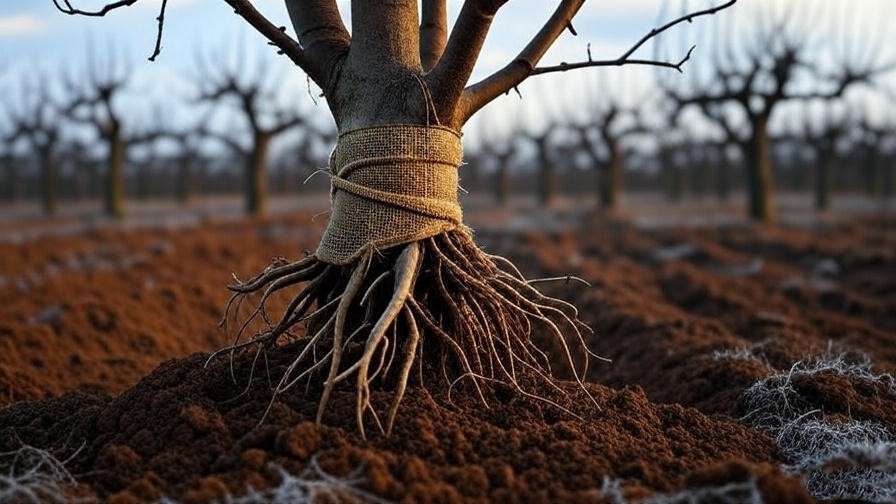
Tip 1: Choose the Right Bare Root Fruit Tree for Your Climate and Soil 🌍
Understanding Your Growing Zone
Selecting the right tree starts with knowing your USDA Hardiness Zone, which determines which plants can thrive in your region’s climate. For example, Honeycrisp apples flourish in colder zones (4–6), while Santa Rosa plums prefer milder zones (7–9). Check your zone using the USDA’s online map and choose varieties that match your area’s temperature range. This ensures your tree can withstand winter frosts or summer heat. Don’t know your zone? A quick online search with your zip code will reveal it!
Assessing Your Soil Type
Soil is the foundation of a healthy fruit tree. Most fruit trees prefer well-draining, loamy soil with a pH of 6.0–7.0. Test your soil using a home kit or send a sample to your local extension service for detailed analysis. If your soil is too clay-heavy, add organic matter like compost to improve drainage. Sandy soils benefit from added organic material to retain moisture. For instance, a Michigan orchardist transformed her heavy clay soil with compost and grew thriving Red Delicious apple trees. Amend your soil early to give your tree the best start.
Tip 2: Time Your Planting Perfectly ⏰
Best Seasons for Planting Bare Root Fruit Trees
Timing is critical for bare root fruit trees. The ideal planting window is late winter to early spring, when trees are dormant and temperatures are cool. In temperate climates, aim for February to March; in milder regions, November planting may work. This dormancy period allows roots to establish before the tree focuses energy on leaf growth. Check your local frost dates to avoid planting during unexpected freezes, which can stress young trees.
Why Timing Matters
Planting during dormancy gives roots a head start, as the tree isn’t expending energy on leaves or fruit. Late planting, especially in hot weather, can lead to heat stress or poor root development, reducing your tree’s chances of survival. For example, planting a bare root peach tree in early spring allows it to establish roots before summer heat. A common mistake is planting too late, so plan ahead and mark your calendar for the optimal window.
Tip 3: Prepare Your Planting Site Like a Pro 🛠️
Selecting the Perfect Spot
Your tree’s location can make or break its success. Choose a spot with full sun (6–8 hours daily) to maximize photosynthesis and fruit production. Ensure good air circulation to prevent fungal diseases, but avoid exposed areas with strong winds that can damage young trees. Low-lying areas, or “frost pockets,” trap cold air and can harm blossoms, so opt for slightly elevated ground. A south-facing slope is often ideal for warmth and drainage.
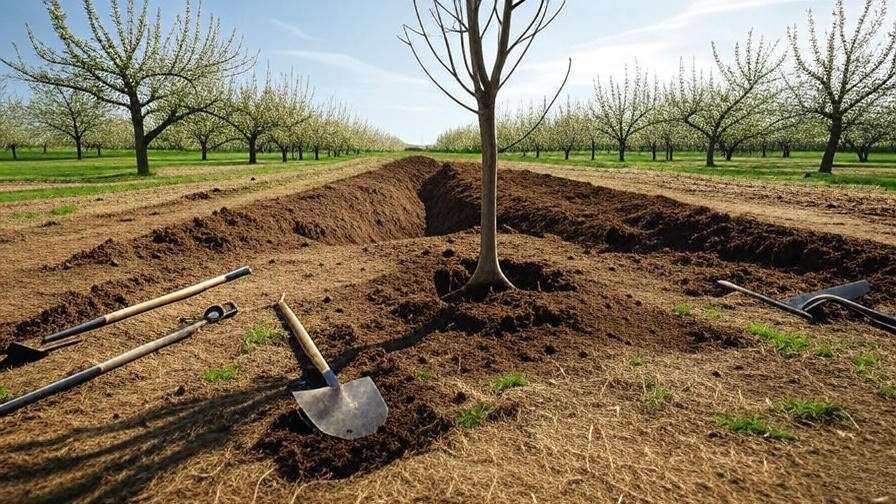
Digging and Preparing the Hole
Dig a hole twice as wide as the tree’s root spread but no deeper than the root system—typically 18–24 inches wide and 12–18 inches deep. Loosen the soil to encourage root penetration. Mix in compost or aged manure to enrich the soil, but avoid fresh manure, which can burn roots. A well-prepared hole ensures roots spread naturally, setting the stage for healthy growth. For a visual guide, imagine a wide, shallow bowl rather than a narrow, deep pit.
Tip 4: Master the Art of Planting Bare Root Fruit Trees 🌱
Soaking and Inspecting Roots
Before planting, soak the tree’s roots in a bucket of water for 4–6 hours to rehydrate them after transport. Inspect the roots for damage, such as broken or mushy sections, and trim these with clean, sharp pruners. Look for circling roots, which can strangle the tree over time, and gently tease them apart. This step is crucial for ensuring the tree establishes a strong root system.
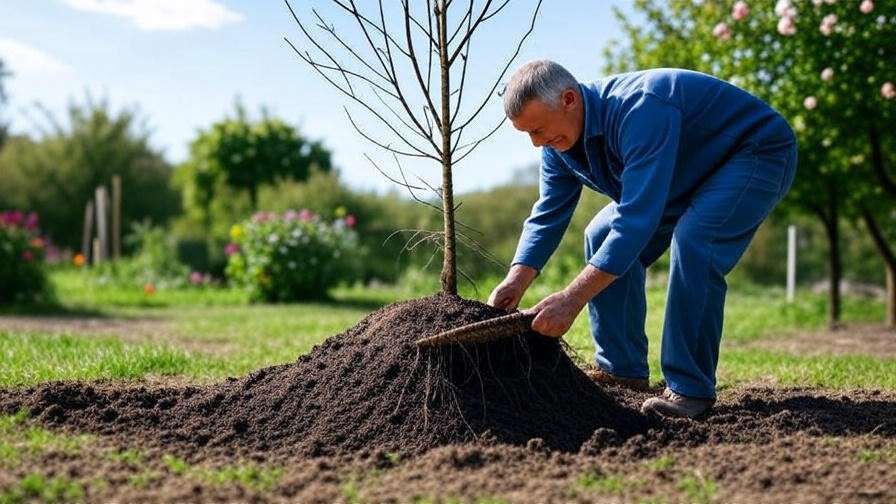
Planting Technique for Success
Here’s how to plant like a pro:
- Place a small mound of soil in the center of the hole to support the roots.
- Spread the roots evenly over the mound, ensuring they aren’t cramped or bent.
- Position the tree so the graft union (the bulge where the rootstock meets the scion) is 2–3 inches above the soil line.
- Backfill the hole gradually, gently firming the soil to eliminate air pockets without compacting it.
- Water thoroughly to settle the soil.
Avoid common mistakes like planting too deep, which can suffocate the tree, or leaving air pockets, which dry out roots. Certified arborist John Smith advises, “Proper root alignment during planting is the foundation of a tree’s long-term health.”
Tip 5: Water and Mulch for Healthy Root Development 💧
Watering Best Practices
Water is the lifeblood of a newly planted bare root fruit tree. After planting, give the tree a deep soak—about 5 gallons—to settle the soil and hydrate the roots. For the first year, provide 1–2 inches of water weekly, adjusting for rainfall. Use a soaker hose or drip irrigation for consistent moisture without waterlogging. Overwatering can drown roots, so check soil moisture by digging a few inches down; it should feel like a wrung-out sponge.
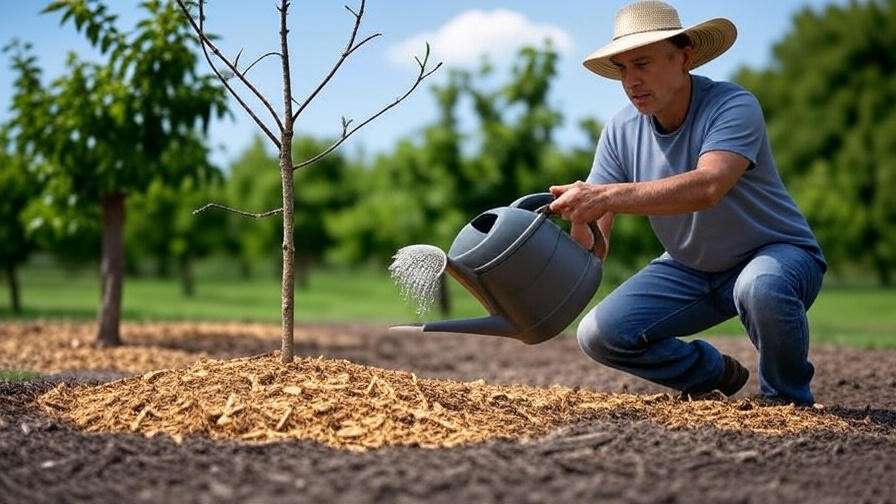
Mulching for Moisture and Protection
Mulch is your tree’s best friend. Apply a 2–4 inch layer of organic mulch, like wood chips, straw, or shredded bark, around the base, keeping it 2–3 inches away from the trunk to prevent rot. Mulch retains moisture, suppresses weeds, and regulates soil temperature, creating a stable environment for root growth. Avoid “volcano mulching” (piling mulch against the trunk), as this invites pests and disease. A well-mulched tree can reduce water needs by up to 30%, according to Oregon State University research.
Tip 6: Prune and Train Your Tree for Optimal Growth ✂️
Pruning Basics for Bare Root Trees
Pruning is a critical step in shaping your bare root fruit tree for long-term health and productivity. The goal is to create a strong structure, promote fruit production, and prevent disease by improving air circulation. For newly planted trees, pruning begins at planting. Remove any broken or damaged branches using clean, sharp pruners. Focus on establishing a balanced framework: for most fruit trees, aim for an open-center or central-leader structure. Open-center pruning suits stone fruits like peaches and plums, encouraging a vase-like shape, while central-leader pruning works for apples and pears, fostering a single, strong trunk. Cut back the leader (main stem) by about one-third to encourage branching, but avoid over-pruning, which can stress the young tree.

Training Young Trees
Training ensures your tree grows in the desired shape and remains structurally sound. For dwarf or semi-dwarf trees, consider staking to provide support against wind, especially in exposed areas. Use a sturdy stake driven 12–18 inches into the ground, and loosely tie the tree to it with soft, flexible ties to allow natural movement. For small spaces, try espalier training, where branches are guided along a trellis or fence in a flat, two-dimensional pattern. For example, a dwarf apple tree trained as an espalier can produce abundant fruit in a narrow garden. Prune and train in late winter, when the tree is dormant, to minimize stress and maximize growth response. Pro Tip: Regularly check ties to prevent girdling as the tree grows.
Tip 7: Protect and Maintain Your Tree for Long-Term Success 🛡️
Pest and Disease Management
Bare root fruit trees, like all plants, face threats from pests and diseases. Common pests include aphids, which suck sap and weaken growth, and codling moths, which damage fruit like apples. Fungal diseases, such as apple scab or powdery mildew, can also reduce yields. Adopt organic solutions for sustainable care: apply neem oil to deter pests, plant companion plants like marigolds to repel insects, and maintain garden hygiene by removing fallen leaves and fruit. Integrated pest management (IPM), endorsed by the University of California’s agriculture program, combines monitoring, cultural practices, and targeted treatments to minimize chemical use. Check your trees weekly for signs of trouble, such as curled leaves or discolored fruit, and act promptly.
Ongoing Care and Fertilization
To keep your tree thriving, follow a consistent care routine. In early spring, apply a balanced fertilizer (e.g., 10-10-10) to provide essential nutrients—nitrogen for growth, phosphorus for roots, and potassium for fruit quality. Spread fertilizer evenly around the drip line (the area under the outer edge of the canopy), and water it in thoroughly. Avoid over-fertilizing, which can lead to excessive leaf growth at the expense of fruit. Monitor for nutrient deficiencies: yellowing leaves may indicate nitrogen deficiency, while stunted growth could signal low phosphorus. A soil test every 2–3 years can guide your fertilization plan. Regular weeding and mulching also support long-term health by reducing competition for nutrients.
Troubleshooting Common Bare Root Fruit Tree Problems 🚨
Even with the best care, issues can arise. Here’s how to address common problems:
- Tree Fails to Leaf Out: This could stem from improper planting depth, root damage, or insufficient water. Check the graft union—it should be above soil—and ensure roots are hydrated. If the tree doesn’t leaf out by late spring, consult a local nursery for advice.
- Poor Fruit Production: Lack of pollination is a frequent culprit. Many fruit trees, like apples and pears, require a second tree of a different variety for cross-pollination. Ensure pollinators are nearby, or plant a compatible variety. Pruning mistakes, like removing too many fruiting spurs, can also reduce yields. Adjust your pruning technique to preserve these productive branches.
- Pest Infestations or Disease: Early detection is key. For example, apple scab appears as dark, velvety spots on leaves. Remove affected leaves and apply sulfur-based fungicides if needed. For pests like aphids, a strong blast of water or insecticidal soap can help.
Troubleshooting Chart
| Symptom | Possible Cause | Solution |
| No leaves by late spring | Planting too deep, dry roots | Check graft union, ensure proper watering |
| Few or no fruits | Lack of pollination, over-pruning | Plant a pollinator variety, adjust pruning |
| Spotted leaves | Fungal disease (e.g., apple scab) | Remove debris, apply organic fungicide |
FAQs About Bare Root Fruit Trees ❓
Q1: How long does it take for a bare root fruit tree to bear fruit?
Most bare root fruit trees take 2–5 years to produce fruit, depending on the variety and rootstock. Dwarf trees often fruit sooner (2–3 years), while standard trees may take 4–5 years. Proper care accelerates this timeline.
Q2: Can I plant bare root trees in containers?
Yes, dwarf varieties are ideal for containers. Use a large pot (at least 15–20 gallons) with well-draining soil and ensure consistent watering. Containers limit root growth, so choose a dwarf rootstock like M27 for apples.
Q3: What’s the best way to store a bare root tree before planting?
If you can’t plant immediately, store the tree in a cool, shaded area with roots wrapped in moist burlap or sawdust. Plant within 1–2 weeks to prevent drying out.
Q4: Do all fruit trees need a pollinator?
Not all, but many do. Self-pollinating trees like certain peaches and cherries can fruit alone, but apples and pears often need a compatible variety nearby. Check the tree’s pollination requirements before buying.
Conclusion: Start Your Orchard Journey with Confidence 🌟
Growing bare root fruit trees is a rewarding journey that transforms your backyard into a productive, sustainable orchard. By following these seven essential tips—choosing the right tree, timing your planting, preparing the site, planting correctly, watering and mulching, pruning wisely, and maintaining diligently—you’ll set your trees up for success. Each step, grounded in horticultural science and real-world experience, addresses the needs of both novice and experienced gardeners. Ready to start? Select your tree, prepare your site, and plant with confidence. Share your bare root fruit tree success stories in the comments or explore more tree care guides on our website. Here’s to a bountiful harvest! 🍏


